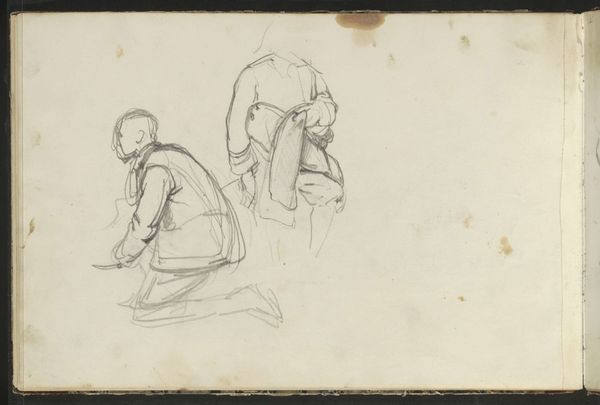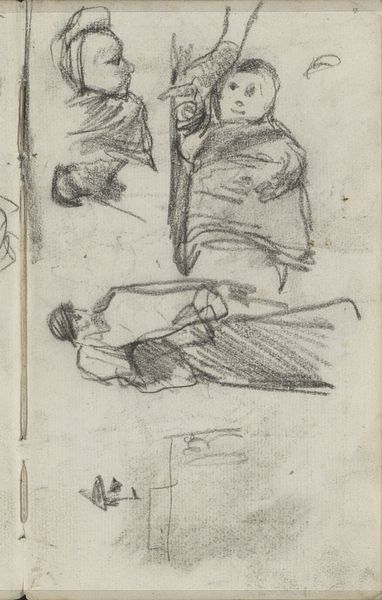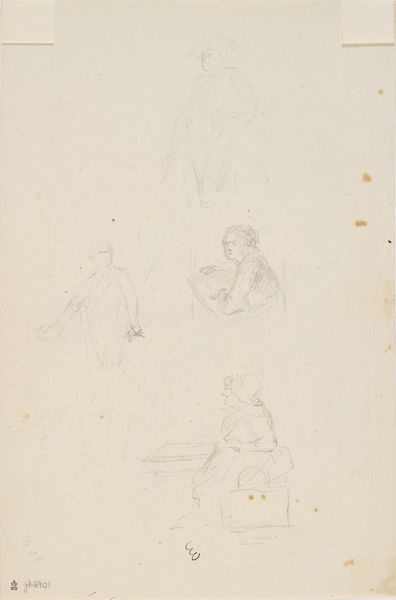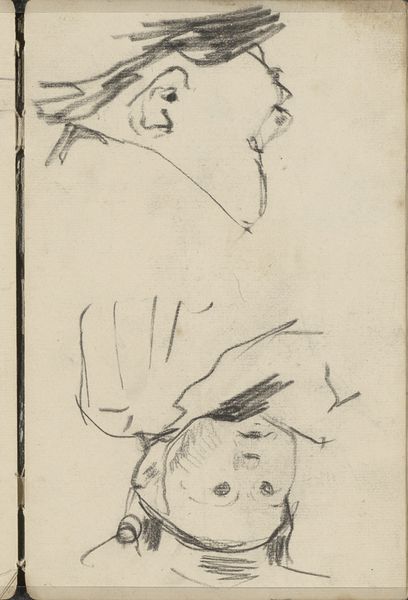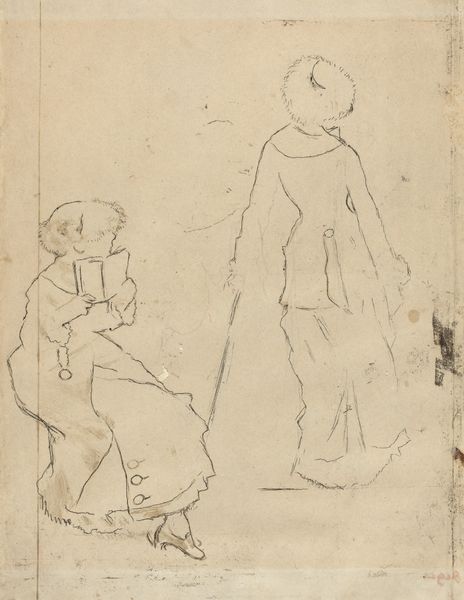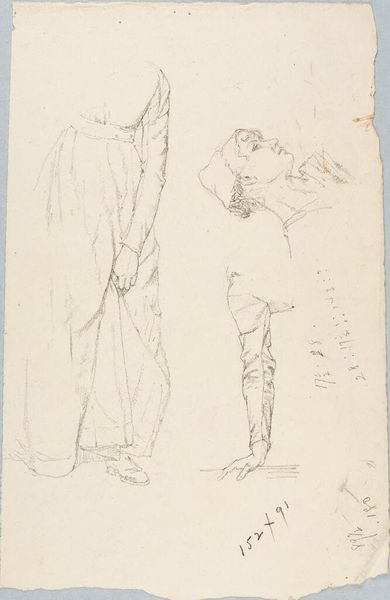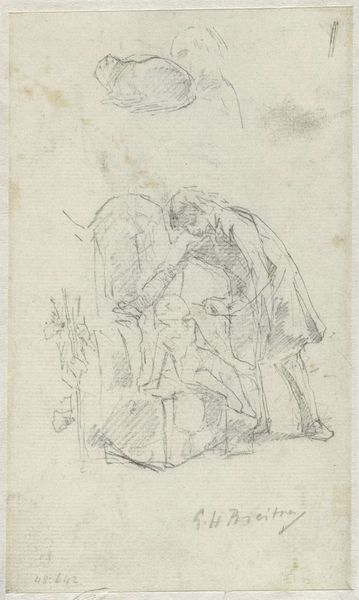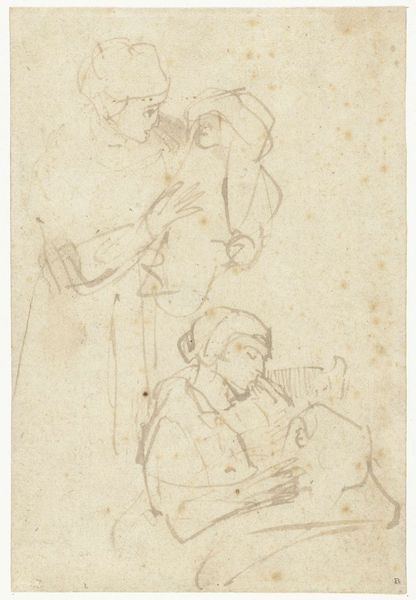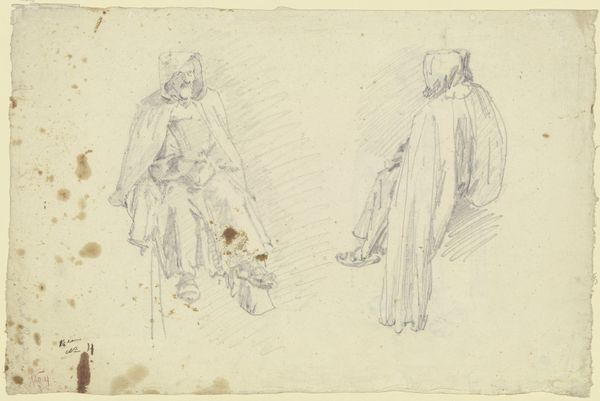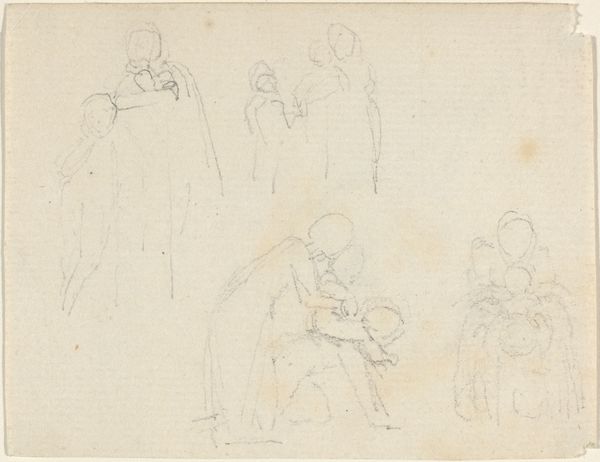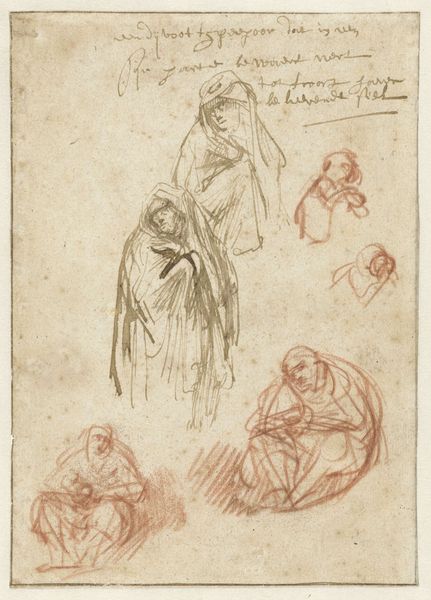
Tre skitser, muligvis arveprinsen samt mand set fra ryggen 1795
0:00
0:00
drawing
#
portrait
#
drawing
#
figuration
#
line
#
history-painting
#
academic-art
Dimensions: 119 mm (height) x 193 mm (width) (bladmaal)
Editor: This is "Three Sketches, possibly the Crown Prince and a Man Seen From the Back" by Gerhard Ludvig Lahde, created in 1795. It's a drawing, with a definite sketch-like quality as the name suggests, featuring some notable brown stains. I am really curious to understand the conditions that might have produced those drawings. What is your perspective on this work? Curator: Well, given my focus, I see the paper itself as a significant material here. The stains and imperfections, along with the deliberate lines, point to its use-value as a resource in Lahde's artistic production. The labor implied in its creation - the very act of sketching - contrasts with the implied status of the possible Crown Prince. Editor: That's interesting. So you see the cheap materials as highlighting something about labor or production, rather than just being old or unimportant? Curator: Exactly. And consider this: drawing was not merely a straightforward process of depicting reality; it involved a whole network of material resources, workshops, and modes of distribution. Was this made as a preparatory sketch to explore patronage potential for example? Think about the social and economic context surrounding the commissioning of art and the role of artists like Lahde within that system. Editor: I didn't think about patronage! So this isn't just a study of figures, it might be a study for accessing power. The use of cheaper material maybe speaks to that? Curator: Precisely. It prompts questions about artistic skill as a form of labor and its exchange value within a society driven by emerging ideas around class and social hierarchies. What narratives about labour and materiality were circulating that could relate to the stains or the fast mode of producing art we are looking at now? Editor: That definitely gives me a different perspective on it. Looking at it that way makes it more about society than art... in a good way! Curator: Absolutely. The materiality directs our focus toward these themes. And remember to question how “art” as a separate category from craft came to be in the first place!
Comments
No comments
Be the first to comment and join the conversation on the ultimate creative platform.
